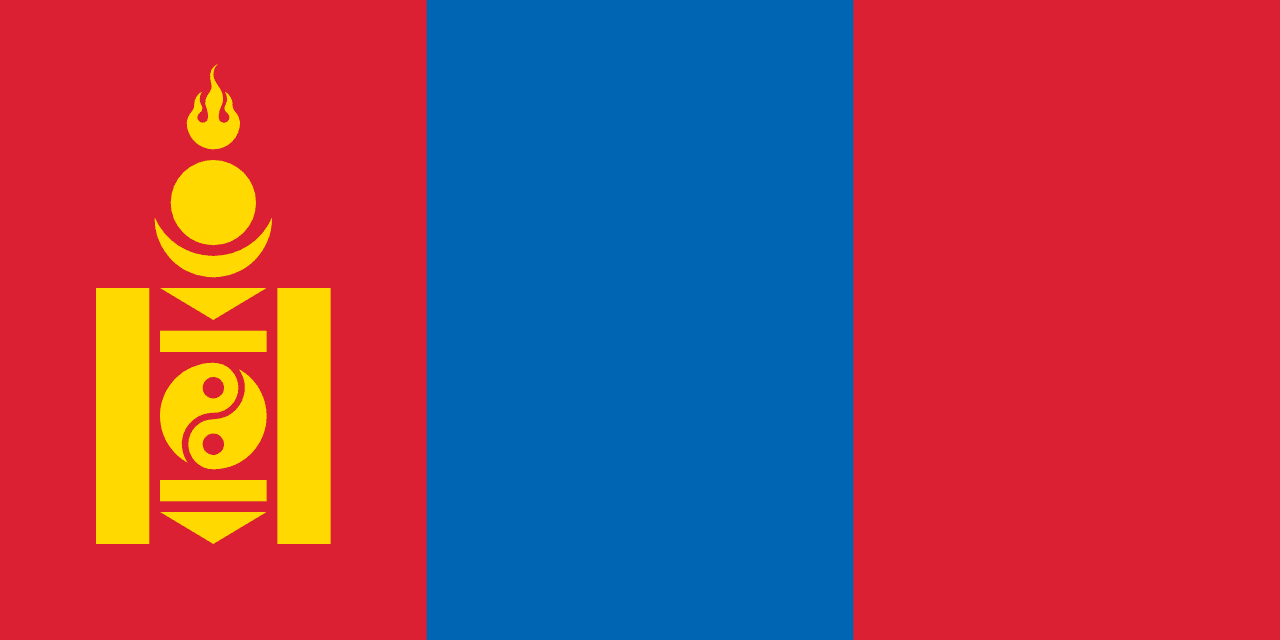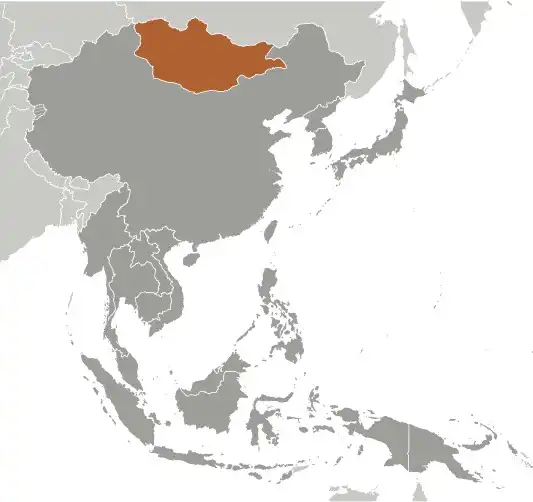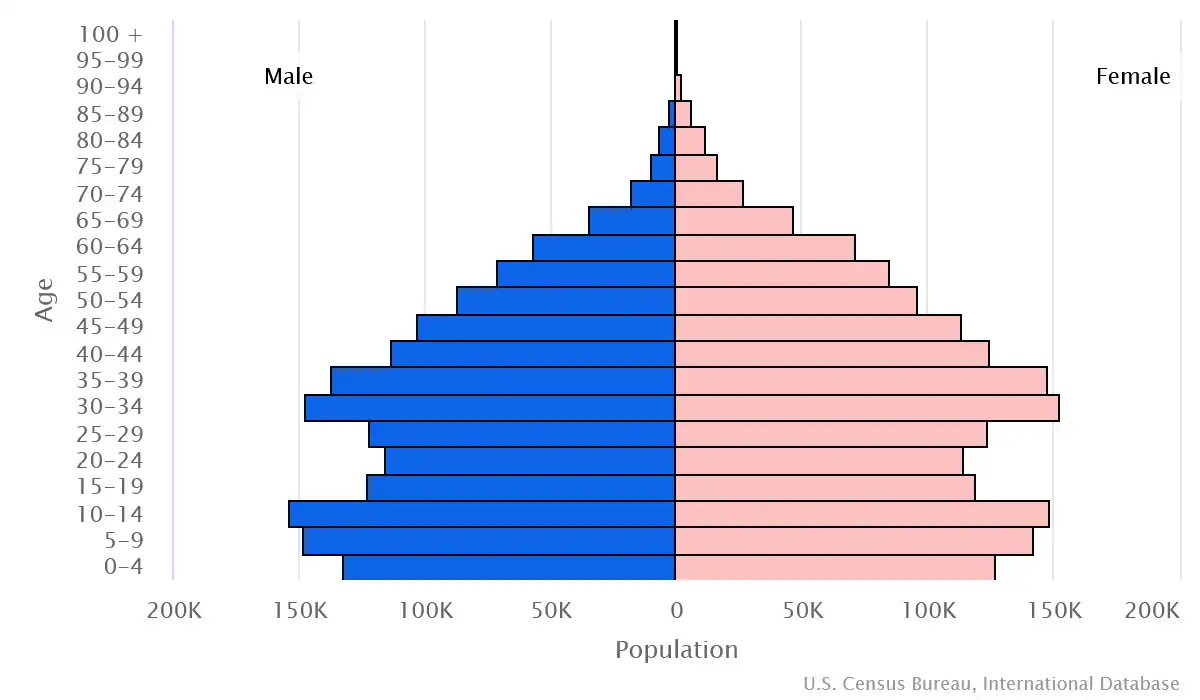
Mongolia Country Profile
Key Facts of Mongolia

| Government type: | semi-presidential republic |
| Capital: | Ulaanbaatar |
| Languages: | Mongolian 90% (official, Khalkha dialect is predominant), Turkic, Russian (1999) |
Mongolia Demographic Data
Ethnic Groups in Mongolia(2020 est.)
Religious Groups in Mongolia (2020 est.)
Age pyramid of Mongolia

Mongolia Economy Statistics
Economic overview of Mongolia
lower middle-income East Asian economy; large human capital improvements over last 3 decades; agricultural and natural resource rich; export and consumption-led growth; high inflation due to supply bottlenecks and increased food and energy prices; currency depreciation
Mongolia Real GDP (purchasing power parity) in Billion $
Mongolia Real GDP per capita in $
Mongolia's Exports & Imports in billion $
Top 5 Import Partnerin 2022 (80%) of Mongolia
Top 5 Import Commodities in 2022 of Mongolia
- refined petroleum ⛽
- cars 🚗
- trucks 🚚
- trailers 🚚
- raw iron bars 🛠️
Top 5 Export Partnerin 2022 (99%) of Mongolia
Top 5 Export Commodities in 2022 of Mongolia
- coal ⚫
- copper ore 🟧🪙
- gold 💰
- animal hair 🐑
- iron ore ⛓️
Geography of Mongolia
Map of Mongolia

Land and Water Distrubtion of Mongolia
Natural Resources of Mongolia
- oil 🛢️
- coal ⚫
- copper 🟧🪙
- molybdenum 🪨
- tungsten 🔧
- phosphates ⛏️
- tin 🪙
- nickel 🪙
- zinc 🔩
- fluorspar 💎
- gold 💰
- silver 🪙
- iron 🛠️
Climate inMongolia
desert; continental (large daily and seasonal temperature ranges)
History of Mongolia - a Summary
The peoples of Mongolia have a long history under a number of nomadic empires dating back to the Xiongnu in the 4th century B.C., and the name Mongol goes back to at least the 11th century A.D. The most famous Mongol, TEMÜÜJIN (aka Genghis Khan), emerged as the ruler of all Mongols in the early 1200s. By the time of his death in 1227, he had created through conquest a Mongol Empire that extended across much of Eurasia. His descendants, including ÖGÖDEI and KHUBILAI (aka Kublai Khan), continued to conquer Eastern Europe, the Middle East, and the rest of China, where KHUBILAI established the Yuan Dynasty in the 1270s. The Mongols attempted to invade Japan and Java before their empire broke apart in the 14th century. In the 17th century, Mongolia fell under the rule of the Manchus of the Chinese Qing Dynasty. After Manchu rule collapsed in 1911, Mongolia declared independence, finally winning it in 1921 with help from the Soviet Union. Mongolia became a socialist state (the Mongolian People’s Republic) in 1924. Until the collapse of the Soviet Union in 1989, Mongolia was a Soviet satellite state and relied heavily on economic, military, and political assistance from Moscow. The period was also marked by purges, political repression, economic stagnation, and tensions with China.
Mongolia peacefully transitioned to an independent democracy in 1990. In 1992, it adopted a new constitution and established a free-market economy. Since the country's transition, it has conducted a series of successful presidential and legislative elections. Throughout the period, the ex-communist Mongolian People's Revolutionary Party -- which took the name Mongolian People’s Party (MPP) in 2010 -- has competed for political power with the Democratic Party and several other smaller parties. For most of its democratic history, Mongolia has had a divided government, with the presidency and the parliamentary majority held by different parties but that changed in 2021, when the MPP won the presidency after having secured a supermajority in parliament in 2020. Mongolia’s June 2021 presidential election delivered a decisive victory for MPP candidate Ukhnaagiin KHURELSUKH.
Mongolia maintains close cultural, political, and military ties with Russia, while China is its largest economic partner. Mongolia’s foreign relations are focused on preserving its autonomy by balancing relations with China and Russia, as well as its other major partners, Japan, South Korea, and the US.
